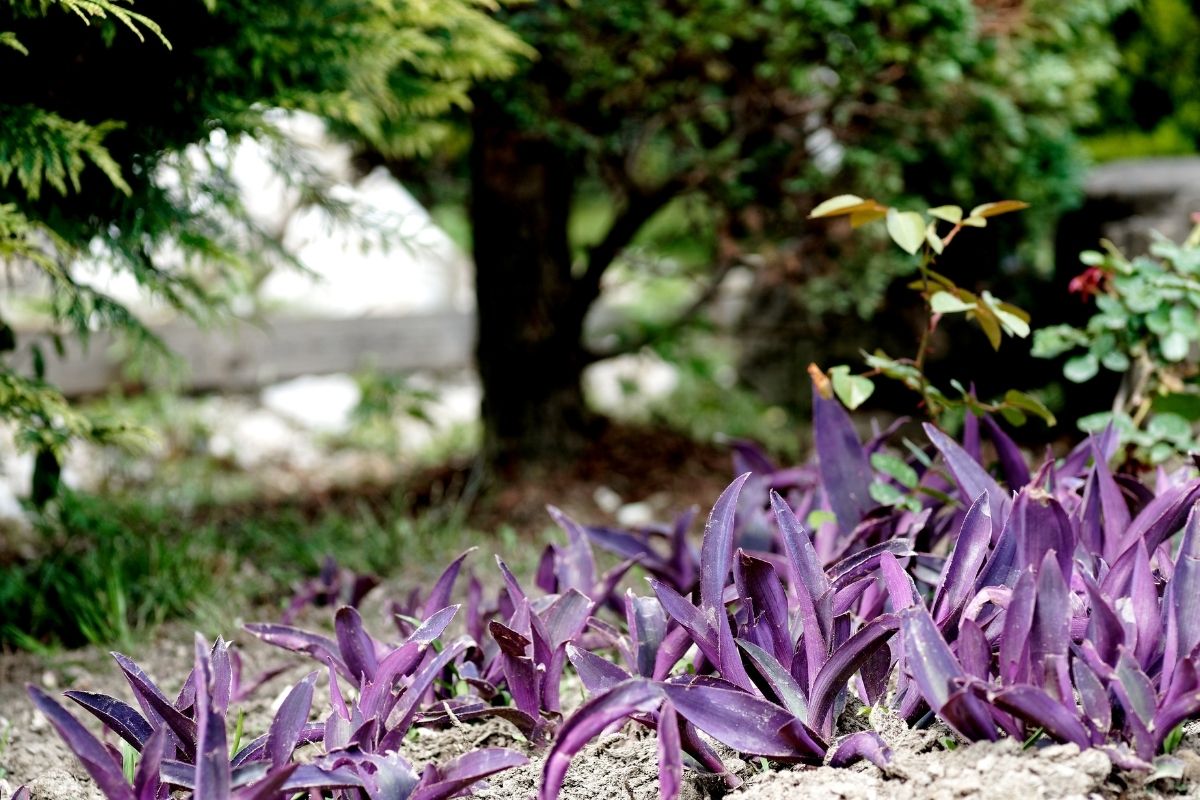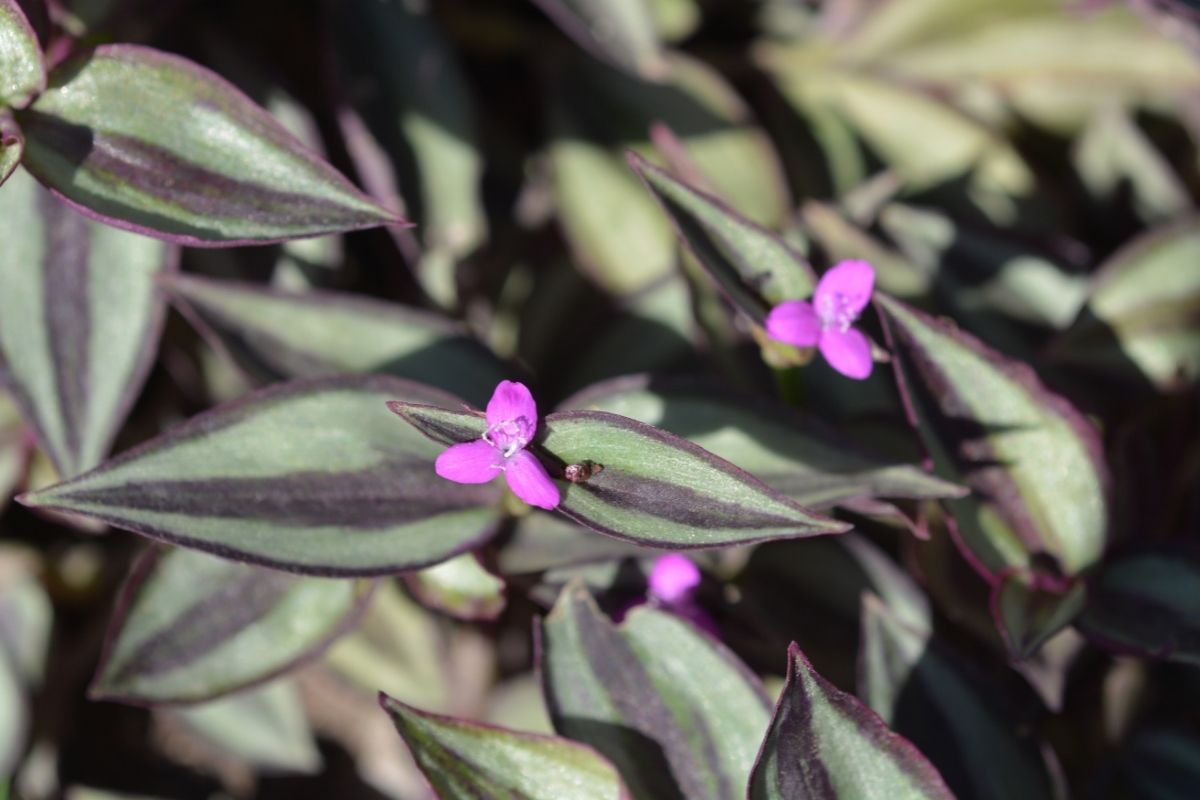Wandering Jews have a beautiful foliage which typically trails or climbs if someone uses them as a hanging plant.
Due to their colorful nature, they have become incredibly popular as houseplants – but pet owners need to be wary, due to their toxicity to cats and dogs.
To give it its botanical name of the tradescantia, this plant is classified as a herbaceous perennial and in order for it to grow healthily, it needs plenty of sunlight, preferably indirect, and a well drained plant pot in moist soil.
Direct sunlight can be harmful, and that is why these plants do so well indoors.
Once you’ve got your perfect wandering Jew, you may wish to propagate it, and that makes perfect sense. But, how can you do this without harming your plant, and how do you do this correctly?
This article will list all the best ways to propagate your wandering Jew along with some other handy pieces of information to know.

Propagating Your Wandering Jew In Soil
You’ll have to begin first by taking specific and careful cuttings from the plant – targeting the ends of the branches.
You’ll need to cut at a 45-degree angle by the leaf node and ensure you are using a sharp and clean blade to do so.
The correct cuttings will be around six inches in length and will need to have the bottom leaves taken off the stem after the cuttings have been taken.
You’ll next need to choose your pot. You may wish to opt for a hanging basket and this is more recommended.
Around an inch above the bottom of the pot, you’ll want to fill it evenly with some all-purpose soil.
You will next need to poke several holes in the bottom of the pot to ensure a good drainage and to place your stems.
You can keep these stems solid by covering the surrounds with more soil if required.
Over the coming days, water your plant as necessary and ensure the soil stays nice and moist. Next, put the plant in an area that gets plenty of indirect light and keep tending to it as it grows.
In a matter of just months, your wandering Jew should have bloomed in size and beauty.
RELATED: 9 Stunning Rare Philodendrons; With Tips To Help Them Thrive
Propagating Your Wandering Jew In Water
Before you begin this step, make sure you have a jar of around medium to large jar ready for the cuttings to be placed into.
You should not wait too long after your cuttings have been taken for you to place them into water.
Exactly the same way as you would with soil, you have to start by taking careful cuttings underneath the leaf node at a specific 45-degree angle by using a clean, sharp blade.
Then remember to remove the leaves and the bottom.
Next, take your jar and fill it with enough water so that at the very minimum, the bottom leaf node is entirely submerged in the water.
After a couple of weeks to a month, you will notice growth and development. Carefully move these to an all-purpose mix for potting and continue your usual care for your plants as you would for the original.
Propagating Tip

If you carefully pinch the tips off the end of the wandering Jew’s branches, you can encourage better and more fruitful growth of the foliage rather than the legs.
You can also use these tips for propagation later on with these plant cuttings.
RELATED: Aloe Vera Plant: Important Tips and Tricks in Reviving Your Precious Plant
Caring For Your Propagated Wandering Jew
Luckily, these houseplants don’t really need too much looking after. If you were to accidentally ignore or neglect them for a while, you should not notice any lasting damages.
There are a few things you need to remember though, like holding off on watering too much in winter months.
This is because the plant’s growth slows down during the climate and if it is given too much water, there is a risk of drowning the plant.
Fertilization is quite basic too. If you go to most stores that sell plant food and other gardening things, you should be able to find a water-soluble solution that can be placed into the soil of your wandering Jew.
This can be used once every two weeks or so to promote the growth of your plant.
Wandering Jews do not like direct sunlight and grow best when they’re in a bright area out of the sun’s direct rays.
They like to be in warm, temperature conditions with a lot of moisture, resembling humid conditions.
Some of the best growing methods are to place these plants into hanging baskets. These baskets promote drainage and give the right amount of light if they’re placed strategically.
It also allows for you to keep them away from pets who are at risk of their toxicity.
RELATED: Prayer Plant’s Bloom 101 | How To Make Your Prayer Plant Bloom Fast!
Problems With Wandering Jews After Propagation
Some of the most common problems become apparent after you’ve taken cuttings.
First, if you’ve noticed that there is no development with your plant, the chances are that the cuttings were incorrect or the place you’ve put them isn’t agreeing with the plant.

If you have a plant care schedule, you can curtail this type of common error. Another concern, more with the plants in water is that the jar was not large enough for growth to take place correctly.
When you’ve placed your cuttings in water and in the correct sized jar, you should notice some development within a few weeks, but if nothing has happened within a month, you need to try again when possible.
If you’ve noticed your wandering Jew’s leaves have begun to fade, this is typically a warning sign that the plant is not receiving an adequate amount of indirect sunlight.
You’ll need to change this situation and quickly place it in a better area.
If you don’t do this in an adequate time, you will likely lose the plant altogether.
If however, you’ve noticed the leaves turning yellow or a bright yellow, this is typically a sign that the wandering Jew is soaked in water, and you’ll need to let it dry out.
Tropical plants typically do not require constant water and the wandering Jew shares this as a trait.
If on the other side of things though, you notice brown leaves or curled leaves on your wandering Jew – the chances are that the plant needs water desperately.
The trick is to not give the plant a gallon of water, but to slowly give it an adequate amount to keep the soil moist.
Excess water cannot drain away easily and needs to be dried out and giving the plant too much water at once can cause serious problems.
After you have looked after your wandering Jew for a while and have let it grow and develop into a mature plant, it might not look the same as it always did.
It began as a beautiful plant, but over time – the legs will grow, and it will start to look a little concerning.
Typically, wandering Jews should only live and thrive for around two to three years at best, so it should not worry you too much at this point.
But this is when propagation becomes incredibly important and more critical to get it right.
It might take you a few times to get it right, but experience will make things much easier, and you should be able to produce a perfect new wandering Jew each time.
Final Thoughts
Wandering Jews one of the most beautiful plant varieties and propagating them correctly is a great way to keep your home oxygenated and looking its best.
Just be sure to do things in the right way and keep this plant away from cats and dogs.







